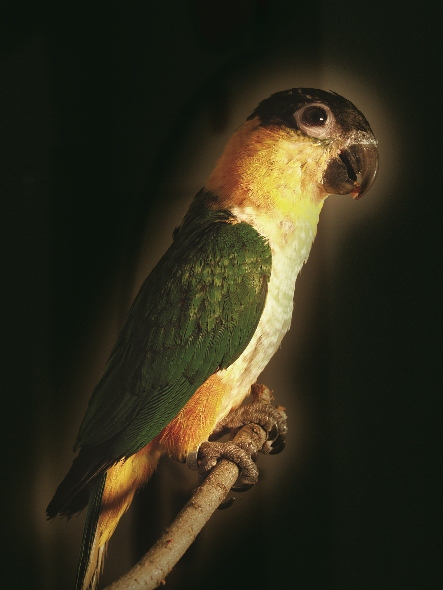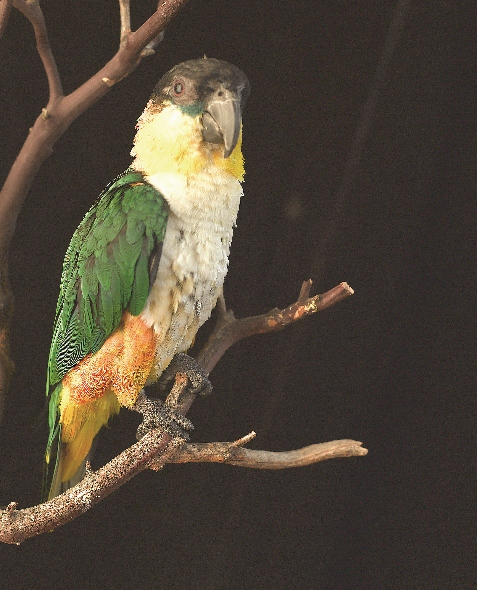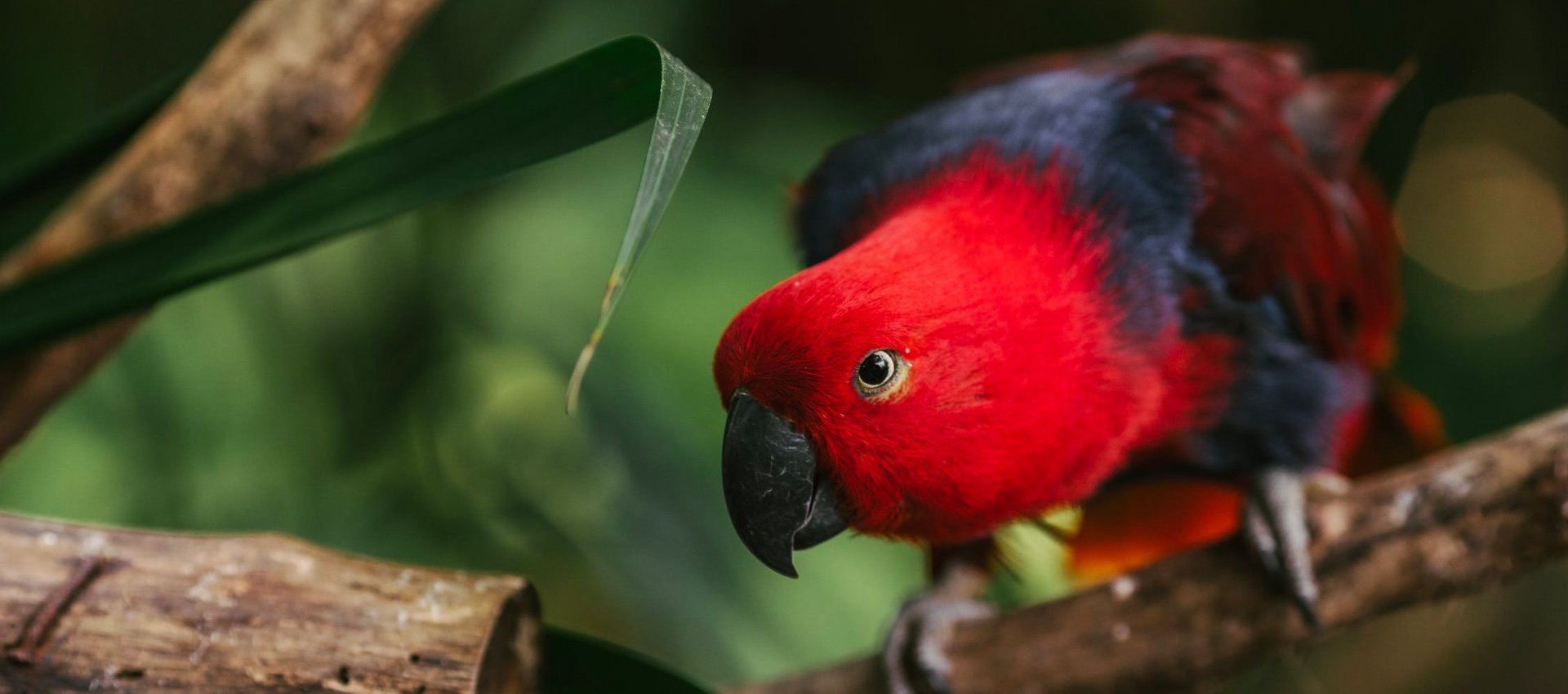Your cart is currently empty!

HARI Official Brand Site

we know little about Caique ecology and conservation needs.
I purchased my first pet Caique, a Black-headed named Sammy, twenty years ago. From that time on, I wanted to learn as much about them as I could including how they live in the wild. My quest for this information has been difficult because no naturalist has ever focused on them as a wild species. Thus, we know little about Caique ecology and conservation needs. Over the years, however, I have gathered snippets here and there from bird guides, early descriptions, bird magazines, and scientific literature, as well as made several trips to South America in hopes of learning more. Here I present some of what I have learned.

Caiques are restricted to the low elevation rain- forests of the Amazon/Orinoco basin. Naturalists speculate their failure to move out of this range is either due to their lack of capacity or lack of propensity for flying long distances. This also accounts for the sharp separation of the ranges of the only two species of Caiques. The range of the white-bellied (Pionites leucogaster) is entirely south of the Amazon River and the range of the black-headed (Pionites melanocephalus) is entirely north of it. The two species only encounter each other to any degree in their western ranges where the rivers are narrow, but even there a ridge of the Andes Mountains is sufficient to separate the pallid form of black-headed Caique (P. m. pallidus) from the Yellow-thighed form of the White-bellied caique (P. l. xanthomerius).
To the south and east, a broad savannah called Cerrado separates their range from the Pantanal and the Atlantic coastal forest. They tend to prefer dry forest, not those that are flooded during the rainy season, yet they like to be near water. Even so, there are reports in the scientific literature that they live and breed in Maurita-palm swamps, a favored breeding place for blue and yellow Macaws, and at the edges of seasonally flooded forests. It can be difficult to see Caiques in the wild since they prefer the forest canopy 10 to 40 meters above one’s head. There they move about in and just above the canopy as single birds or small flocks. This was the case during my visit to Cristalino Lodge this past October. There, I saw a flock of three Yellow-tailed Caiques (P. l. xanthurus) on several occasions that I suspect was a pair and their chick. On one occasion, I was able to watch them for several minutes while one picked and dropped twigs from a tree, one chewed on a bromeliad, and another explored a cavity just above a crotch in the same tree. Unfortunately, they were too far for me to get a good photo. All of my other sightings from the tower were far too brief. My guide was able to call them in once along one of the trails while searching for other birds by recording and replaying back their sounds. When they came near, I was able to see their bright yellow tails but also saw that their bellies were a dirty brown.

This is unlike Caiques in captivity that have snowy white breasts. Specimens that naturalists have collected from the wild almost invariably have dirty bellies. This is probably due to the bird eating juicy fruits and the accumulation of sap from leaf bathing. Seeing these birds, I realized that the bright white bellies of our pet caiques might actually be an anomaly. In contrast to Cristalino Lodge, at Tambopata and other sites in southeastern Peru, one can easily observe Yellow-thighed Caiques (P. l. xanthomerius) in large numbers. This is because there, they descend to take clay from licks called colpas. From blinds overlooking the colpa, I saw as many as fifteen or twenty Yellow-thighed Caiques taking clay at once. Dr. Brightsmith (AFA Watchbird, 2004) recently reported that colpa usage at Tambopata peaks just before egg laying and after chicks hatch. Thus, Caique visitation seems to be seasonal, so if you are planning to travel there, it is best to go in October or November. (This makes sense to anyone breeding caiques. Female birds, if left out of their cage, will deconstruct one’s walls to get to plaster or cement just before they start to lay eggs.) I suspect other Caique subspecies visit coplas within their ranges too, but not on such a large scale. One of my big concerns is how Caiques are faring in the wild. No naturalist considers them endangered.
Only two nations continue to export them -Surinam and Guyana, two of the smaller countries of South America. Thus, they are under little threat from export. Further, except for two subspecies, the Pallid and Yellow-tailed, avicul- turalists are now breeding the Black-headed and Yellow-thighed in sufficient numbers that there is no longer a need to take them from the wild. Even the Green-thighed (P. l. leucogaster), although rare in North America, is breeding well in captivity and will probably eventually become available in the pet market. On an earlier visit to Brazil, I saw as many as 13 Green-thighed Caiques living and breeding in one cage in the São Paulo Zoo. People are also breeding them in the US, in Europe, South Africa, and probably elsewhere.
The main threat to wild Caiques is local human activity. In Brazil, I witnessed a huge fire on my return flight from the Cristalino Lodge. Eduardo, my guide told me that in the dry season the smoke often puts such a pall over the Cristalino Reserve that no birds fly.These fires and large logging operations may be the gravest habitat threat, but there are others. Increasingly, people and wildlife are competing for the same foods. Susan Moegenburg (Ecology Letters, 2003) noted that when people over-harvest wild palm fruits, Caiques and other frugivores must find food elsewhere. George Smith (Caged Bird Hobbyist, 1996) noted that caiques often raid rice crops in the early morning and if it rains or there is heavy dew, they become wet and are unable to fly. The locals can then easily catch them and they often end up in a dinner pot. This brings me to another threat, the poverty of the people of the Amazon, particularly indigenous peoples. They hunt parrots primarily for food but secondarily for feathers. They use the feathers to make a variety of body ornaments that they sell. While it is fortunate that the population of many of the indigenous peoples seems to be rebounding, their increasing population is putting more pressure on the resources within the reserves set aside for them. Nonetheless, the outlook for Caiques in the wild is relatively good. Several governments in South America, especially Brazil, have made it a legal offence to keep or sell parrots and other native species. This, however, is widely flouted. Yet, there is a general realization of their value in the environment and this is cause for optimism.

John McMichael graduated from the University of Pittsburgh with a Ph.D. in Biophysics. He is retired now, but for most of his career, he did research on vaccines to prevent infections due to Neisseria Gonorrhoeae, Moraxella bovis, and Moraxella catarrhalis. For this work, he honored by being elected a fellow of the American Academy of Microbiology. He purchased his first Caique in 1984 and since then, focused almost exclusively on this species. He has successfully bred Caiques for over sixteen years and collected an extensive number of published records pertaining to them. In addition, he has traveled extensively in South America to observe them in the wild.

We’re here to help you with everything bird-related! Discover more about parrot conservation, browse conferences and events in your area, connect with local bird clubs, locate a vet or parrot rescue nearby, and read up on fascinating avian news and articles.